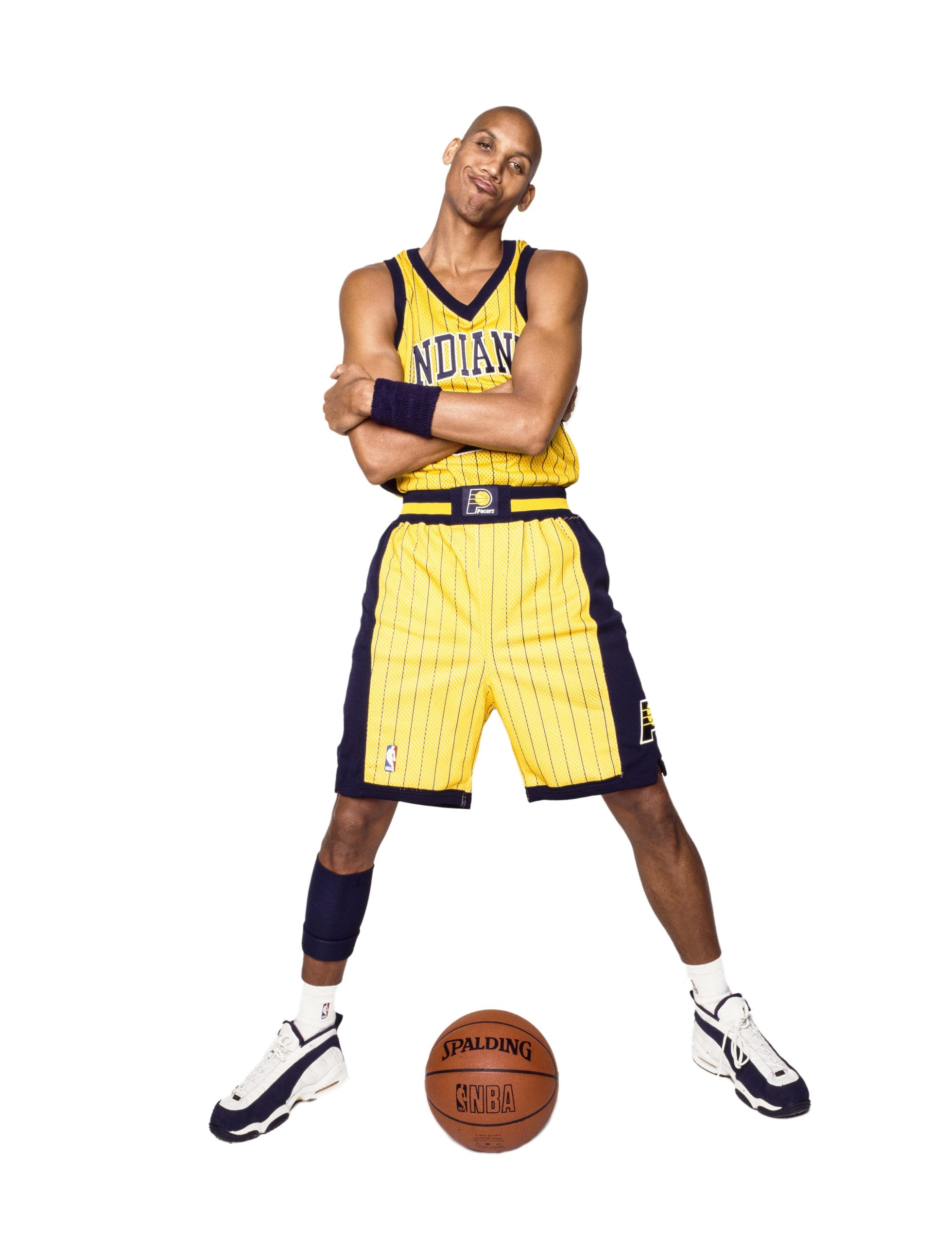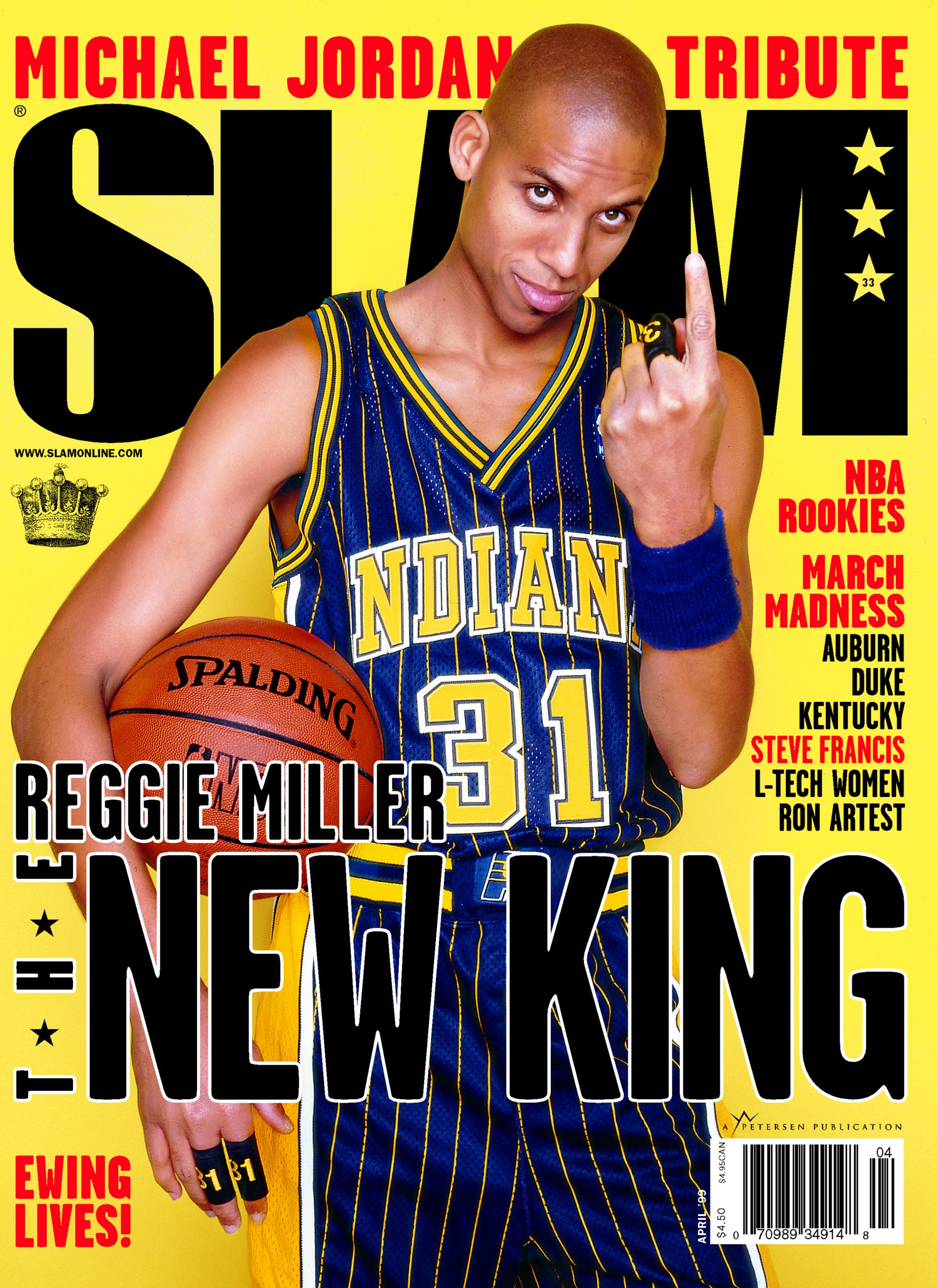For three decades we’ve covered many amazing basketball characters, but some stand above the rest—not only because of their on-court skills (though those are always relevant), but because of how they influenced and continue to influence basketball culture, and thus influenced SLAM. Meanwhile, SLAM has also changed those players’ lives in various ways, as we’ve documented their careers with classic covers, legendary photos, amazing stories, compelling videos and more.
We compiled a group of individuals (programming note: 30 entries, not 30 people total) who mean something special to SLAM and to our audience. Read the full list here and order your copy of SLAM 248, where this list was originally published, here.
Well, this is awkward. I was asked to write about Reggie Miller’s evolving relationship with SLAM, I’m assuming, because it started very poorly—and specifically because of me. And I just now realized that the 2024 NBA All-Star Game will be in Indianapolis. Given that fact, and the intervening years, I had a thought: let Reggie (the greatest-ever Pacers player) bask in his Hall of Fame-ness and enjoy the festivities without any childishness or negativity.
All these years later, it no longer hurts to give Reggie his flowers for his exemplary career, and we can now accept the fact that he is universally considered one of the greatest long-range shooters in NBA history. Over 25,000 points (including 2,560 three-pointers) in 18 seasons, two Gold medals. One of the greats.
It’s called growing up, people.

SLAM, during what I like to call “The Profanity Era” (issues 3-38), is linked to Miller more than any other player not named Iverson. But the way we treated them couldn’t be in starker contrast. Iverson could do no wrong in our eyes, while the magazine relentlessly targeted Miller. Why? Because we needed a foil. If we were looking to mix things up in the sports media world (lol), antagonizing a perennial All-Star was the most efficient way to do so.
And Reggie was the best player on the Pacers and the Pacers routinely clobbered the Knicks, while Miller preened, pouted and flopped. He was like the annoying progeny of Mick Jagger and a professional wrestler, enjoying himself so thoroughly while riling the crowd. It was infuriating to us.
And so we (OK, me) pounced on him and began a campaign of poking Miller with a stick. We (OK, I) said all kinds of things about him to try and get a rise from him. He never responded to me directly but, looking back, his annual teabagging of the Knicks in the playoffs was probably enough of an answer.
During his career, Reggie Miller made an enemy of every NBA fan in every city other than his own. He wore that hatred like Superman’s cape. It intrigued him, amused him, and then it fueled him. The hostility, however, was far, far worse in Madison Square Garden than in any other arena. When Miller played the Knicks, he was extra arrogant and spiteful and scornful and miserably clutch. The 25-point fourth quarter. The 8 points in nine seconds. The choke sign.
Those hijinks went on for years—way longer than our “Glen Rice’s wife” campaign or whatever other idiocy we cooked up—and culminated with SLAM publishing Miller’s high school prom photo—which he attended with his sister Cheryl, who was an unreal basketball player in her own right. That I considered it to be a “gotcha” moment shows that we were completely losing the plot.
Many issues after we’d begun our crusade, we were exhausted, frankly, and pumped the brakes. Not long after, Miller appeared on the cover of SLAM 33, sneering in victory. On the magazine’s spine we put the about-face into context, printing, “Hell Freezes Over.”

Once we crossed that rubicon, it was much easier to accept/swallow the fact that Miller was a clutch big-game player and, thanks in large part to his relationship with SLAM, the greatest and most willing villain in basketball history. It also became significantly less complicated to include his name in a conversation without relentlessly denigrating him and must have been freeing to the subsequent editorial staffs. Thankfully, grudges do not transfer well.
A few years ago, long after Reggie retired and began earning big bucks as a very capable color commentator, SLAM asked me to interview him—a first, as it turned out—in an attempt to settle our differences. We were both up for it.
Over the course of an hour, Reggie and I talked about his storied career, his relationship to SLAM and to opposing fans, and how players today would have a much harder time coping with our level of vitriol. I apologized for publishing the prom photo—a stunt that he accurately described as “crazy”—and then we talked extensively about how SLAM’s unrelenting public hatred of his persona had actually helped him.
As it turned out, Reggie was likable, and we both blamed my dubious behavior on my misspent youth and a complete lack of journalistic training or, really, morals. As Russ Bengtson would say, “cool, cool.”
He also credited me for burying my own hatchet and offering him the cover, which is great except for one thing: six months after the Reggie Miller cover was published, I ran away from SLAM, never to return.
Photo by Clay Patrick Mcbride. Featured image via Getty Images.